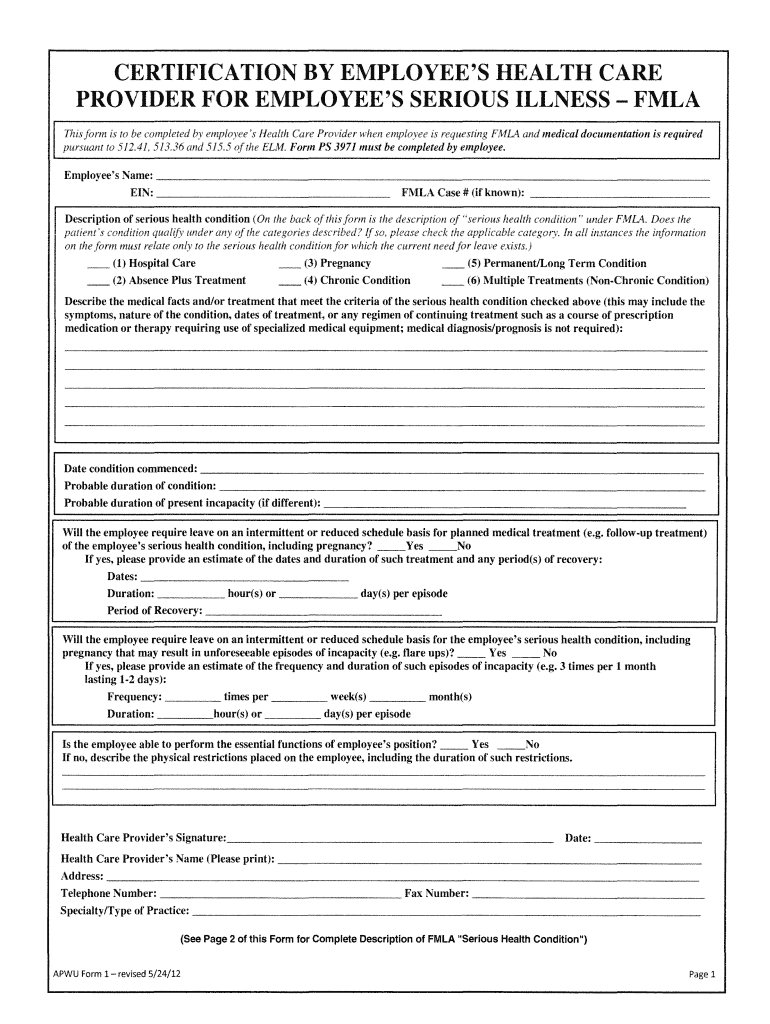FMLA Paperwork Guide for Cancer Patients

When dealing with a cancer diagnosis, navigating workplace policies like the Family and Medical Leave Act (FMLA) can seem overwhelming. FMLA provides eligible employees with up to 12 weeks of unpaid, job-protected leave per year for certain family and medical reasons, which can be crucial for cancer patients undergoing treatment. Understanding the ins and outs of FMLA paperwork can make the process smoother, allowing you to focus more on your health and less on administrative details.
Eligibility for FMLA

Before delving into the paperwork, it’s important to know if you qualify for FMLA:
- Employed at a Covered Employer: Your company must have 50 or more employees within a 75-mile radius of your worksite.
- Work Hours: You need to have worked for the employer for at least 12 months, which does not need to be consecutive, and at least 1,250 hours during the 12-month period before the leave.
Required FMLA Documentation

Here’s a rundown of the documents you’ll need:
- Notice of Eligibility: Your employer provides this form to inform you of your eligibility for FMLA leave.
- Medical Certification: This certification form (WH-380) must be completed by your healthcare provider to confirm your serious health condition.
- Designation Notice: This document specifies whether your leave request has been approved or denied, and outlines your rights and responsibilities.
- Employee’s Leave Request: You or your HR department will submit this form to formally request the leave.
📝 Note: Always keep copies of all forms for your records.
Steps to Apply for FMLA

Here are the key steps to follow when applying for FMLA:
- Inform Your Employer: Let your employer know about your need for leave as soon as possible. While FMLA provides some protections, giving notice in advance when feasible helps in planning coverage.
- Get the Medical Certification Form: This form should be filled out by your healthcare provider. It’s crucial to provide detailed information about your condition, the likely duration of your medical leave, and the treatments required.
- Submit the Certification: Return the completed certification to your employer within the required timeframe, usually 15 calendar days from when you were asked to provide it.
- Complete Necessary Forms: Fill out the employee request forms accurately, ensuring all details are correct to prevent delays or denials.
- Monitor Communication: Keep open lines of communication with your HR department or direct supervisor regarding your leave status.
🛑 Note: Failure to provide certification or to complete the paperwork in a timely manner might result in your leave not being protected under FMLA.
Managing Your Leave

Once your FMLA leave is approved:
- Understand Your Leave Type: Determine if you’re taking continuous leave, intermittent leave, or a reduced work schedule, as this affects how you manage your leave time.
- Plan Your Return: Discuss your return to work with your employer well in advance, possibly including any accommodations you might need.
- Track Your Leave: Keep a record of your leave days taken. If possible, use an HR system or a simple calendar to monitor your remaining leave time.
Challenges and Tips

Here are some challenges you might encounter and tips on handling them:
- Understanding Your Rights: FMLA can be complex. If in doubt, consider consulting with an HR specialist or legal counsel specializing in employment law.
- Coordinating with Short-Term Disability: If you are also applying for short-term disability, understand how these benefits might intersect with FMLA to maximize your time off work.
- Keeping in Touch: Despite being on leave, maintaining some communication with work can help ensure a smoother transition back to the workplace.
Ultimately, dealing with cancer treatment while handling FMLA leave requires a balance of understanding your rights, effective communication with your employer, and meticulous record-keeping. By focusing on these key areas, you can navigate this challenging time with a bit more ease. Remember, FMLA is there to provide you with the support needed during serious health conditions, ensuring that your job is protected while you take time to heal.
What if my employer denies my FMLA request?

+
If your FMLA request is denied, you should review the reasons given by your employer. Common reasons for denial include not meeting eligibility criteria, insufficient medical documentation, or if your employer believes the leave does not qualify under FMLA guidelines. You can request more information, provide additional documentation, or potentially appeal the decision or seek legal advice.
Can I use FMLA intermittently?

+
Yes, FMLA can be taken intermittently or on a reduced leave schedule if medically necessary due to a serious health condition. This might be appropriate for treatments like chemotherapy, where recovery days are needed after sessions.
What happens if I don’t return to work after FMLA leave?

+
If you do not return to work after FMLA leave, your employer could recover the health insurance premiums they paid on your behalf during your leave, depending on your employment contract or company policy. It’s advisable to communicate any issues or delays with your return date to HR.



